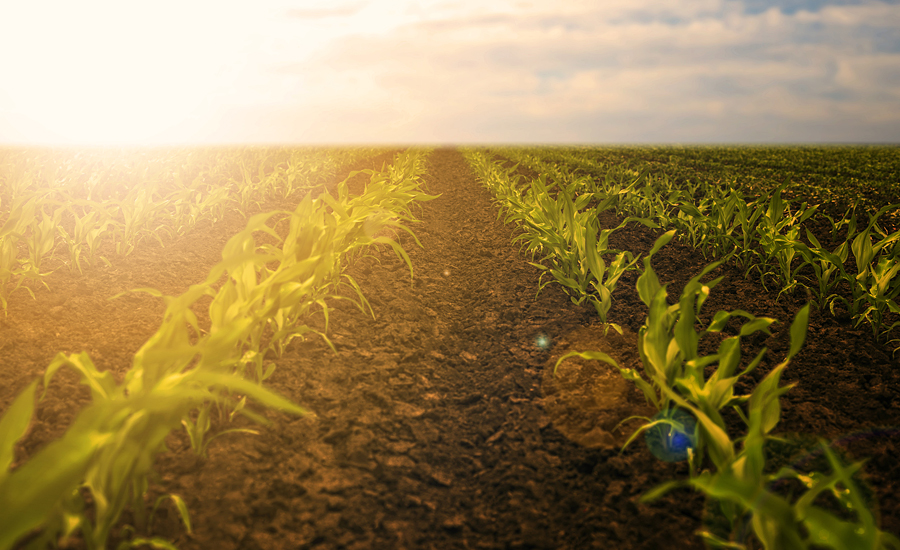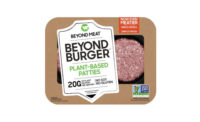A “melting pot” of risks, including U.S. trade war with China, disease and extreme weather will threaten global food price stability in 2019, according to research from Rabobank, The Netherlands.
In its annual Outlook reports, which analyze the prospects for more than 15 agricultural commodities, meat and seafood, Rabobank says that while the global food price environment remains relatively stable, ongoing geopolitical tension, the threat of El Niño weather system and diseases affecting livestock bring great uncertainty to the outlook for 2019.
“The agri commodity price environment may be relatively stable currently, but it’s difficult to remember a time there were so many threats to food commodity prices on so many fronts, from trade wars to currency movements to weather threats and livestock disease,” says Stefan Vogel, head of agri commodity markets at Rabobank and co-author of the report.
“Food producers face a melting pot of risks. Although it’s possible that not all of them will come to pass, they need to be prepared for a difficult and worrying year in 2019,” adds Justin Sherrard, global strategist for animal protein.
Trade wars and currency headwinds
The trade war between the United States and China shaped 2018, and as it continues into 2019, will alter global trade flows in the year ahead and beyond.
Soybeans are most affected. Currently importing 60% of the world’s soybean trade, Rabobank forecasts China’s intake will fall below 90 million tons in 2018-19 due to import restrictions. With China buying from elsewhere, U.S. farmers face an oversupply of soybeans and will likely see stocks more than double to record levels by the end of 2018-19, the bank forecasts.
Meanwhile, Brazil will see crop prices supported. This will make soybean farmers the principal beneficiary of the trade war, while putting heightened feed cost burdens on the livestock sector.
In animal protein, U.S. meat and seafood exporters will be looking to new trading partners outside of China. This provides a window of opportunity for Brazil, Canada and EU, who will be looking to fill the demand in the Chinese market for pork.
The U.S. dollar is currently at an 18-month high and is anticipated to continue to strengthen into late 2019 before stabilizing. U.S. exports will subsequently continue to suffer from a lack of competitiveness abroad, further challenging U.S. farmer profitability.
In Brazil, the weak real has been hit by longstanding domestic political uncertainty, helping to keep sugar and coffee exports competitive in export markets. However, a surplus of coffee beans and sugar is keeping a lid on prices. Yet, Brazil also benefited from China buying more pork.
“The largest threat for farmers is the U.S.-China trade war. Depending on whether the superpowers can reconcile, we’re likely to see commodities like U.S. soybeans continue to take a real hit as China snubs them. This is causing American crop farmers financial pain, while our expectation that the dollar will remain strong deep into 2019 is also a challenge for them,” adds Vogel. “Nevertheless, U.S. soybeans are cheaper than Brazilian given levels of surplus crop, with U.S. farmers turning to other soybean-importing nations to sell stock. China might partly switch back to buying from the U.S. if and when the dispute is resolved, but a full recovery of this trade flow seems unlikely.”
Biosecurity risks look set to spread
Rabobank expects the spread of African Swine Fever (ASF) to continue to have a global impact on pork production, proving especially harmful in China with a decline in supply, rising prices and higher imports. Europe still faces an oversupply of pork, and this will become a particular issue if the ASF outbreak hits production levels and results in a drop off in export opportunities.
But, with pork being the animal protein most at risk of disease, it’s likely to impact consumer perceptions, and as a result, demand. It’s a similar story in the poultry market, as the growing risk of Avian Influenza continues to cause consumer concern, leading to significant volatility in trade streams.
“With the severity of disease outbreaks showing no signs of being curbed, especially in pork and poultry, biosecurity will become a higher business priority for livestock producers in the year ahead. Major outbreaks are affecting global trade flows and consumer preferences, and as a result, we expect to see a shift to beef and seafood consumption in some markets,” says Sherrard.
El Niño remains on the horizon
With an 80% chance of El Niño being formally declared by the end of the winter in the Northern Hemisphere, Rabobank expects the weather event to drive further uncertainty across commodities markets.
Wetter weather in the U.S. Southern Plains could mean an uplift in wheat production, according to Rabobank. Should the weather phenomenon come to fruition, yields of palm oil, sugar and Robusta coffee are likely to take a hit. This will alter, in parts, trade flows in those currently oversupplied markets, given global demand for coffee and sugar is expected to remain robust.
Fishmeal supply has been increasing since El Niño’s last outbreak, with early 2018 Peruvian quota being the highest in recent years at 3.3 million tons. If climate conditions are not stable, a lower quota will add upside pressure and volatility to fishmeal prices in 2019.
The annual Outlook reports are produced by Rabobank’s specialist team of agricultural commodity markets researchers and animal protein analysts based around the world.



